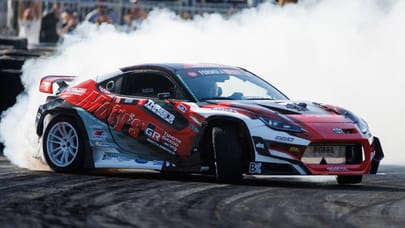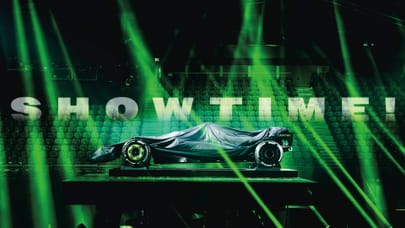
Official: Mercedes is veering into steer-by-wire and getting YOKED
From next year, you’ll be trusting lane changes to Benz binary code…
Steer-by-wire. It’s actually existed for ages. Airliners have been flown using only electronic commands for decades. The Infiniti Q50 brought steer-by-wire to the road in 2014. It felt weird and people didn’t trust it.
Neither did Infiniti, who put a physical, old-fashioned metal steering column in the car too. Y’know, just in case. Amazingly, it didn’t outsell the BMW 3 Series.
But the steer-by-wire age is truly upon us now. Lexus is at it, the Tesla Cybertruck infamously depends on ultra-fast calculations to interpret driver commands into left-and-right turns, and now Mercedes-Benz – inventor of the motor car, no less – has decided it’s time for computers to take over the act of direction changes.
And this allows Mercedes to re-invent the wheel. Literally. Look at that steering, um, thing. Yoke? Controller? Whatever you want to call it, it’s flat-topped, arch-bottomed and allows a less interrupted view of the very latest Mercedes ‘Hyperscreens’. Looks like the awful haptic buttons are remaining, though. So regardless of when you change direction, you’ll accidentally swap radio station.
No matter, you’ll be asleep. Mercedes says the yoke “makes getting in and out of the car easier because the flattened underside creates more room. In combination with future automated driving systems, the driver could have a new, even more relaxed position in the long term". Feeling relaxed yet?
The steer-by-wire system isn’t going into every Mercedes at once: it makes its debut next year in the updated EQS electric luxury saloon. And it’ll be even more refined, as the company argues “vibrations caused by uneven road surfaces, which were previously transmitted to the driver via the steering wheel as disturbances, can now be almost completely prevented".
Parking is said to be easier thanks to the variable steering ratio, while the boffins are also excited by “the opportunity for immersive gaming when the driver stops for a break". No more dry-steering while charging, like in those gamified Teslas.
All very clever, but we’ve all had that moment when our computer crashes, or our phone freezes. Doing an off/on hard reset is a lot less scary when you’re not busy helming a two-tonne superbarge. So what’s Mercedes doing about safety?
Apparently, the spooky steer system has already surpassed one million kilometres of lab testing and another million km on test tracks. And like fly-by-wire jets, redundancy is baked-in: all sensors and control units are doubled so if one system fails, there’s a duplicate back-up operating off a separate power supply on different code. And that’s not all.
Say both computers catch a cold. “Even in the most unlikely event of a complete failure”, we’re told, “lateral guidance is still possible thanks to rear-axle steering and targeted wheel-specific braking interventions via ESP.” Which is, er, more computers.
Top Gear
Newsletter
Thank you for subscribing to our newsletter. Look out for your regular round-up of news, reviews and offers in your inbox.
Get all the latest news, reviews and exclusives, direct to your inbox.
Mercedes is right to take this very seriously. Partly because it has already put a yoke into a car: the AMG One, with its F1-inspired steerer.
And mainly because although Mercedes-Benz invented the modern motor car, it didn’t think to include a steering wheel. The first Benz had a tiller, like a canal boat. It took a Frenchman looking for an advantage in a motor race to come up with the idea of a circular steering ‘wheel’.
Now steering is being left to lines of ones and zeroes, Mercedes really needs to get it right (or left) first time…
Trending this week
- Electric
Top Gear's top 20 electric cars












